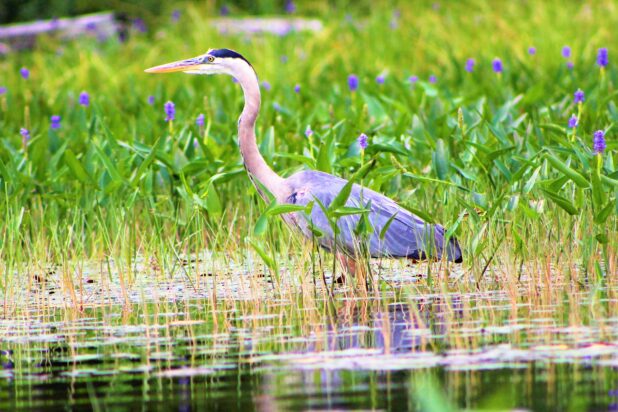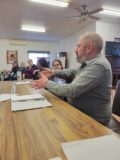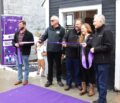General News
Naturalists begin collecting data for Breeding Bird Atlas
February 23, 2021

Feb. 23, 2021
By Nate Smelle
Every 20 years, birders in Ontario conduct a survey of all breeding birds species – including owls and marsh birds – observed and documented throughout the province over a five year period. The goal of this study is to map the distribution and relative abundance of the approximately 300 species of breeding birds in the province, and update the information found in the Ontario Breeding Bird Atlas.
As a collaborative undertaking by Ontario Nature, Birds Canada, Canadian Wildlife Service – Ontario Region, Ontario Field Ornithologists, the Ontario Ministry of Natural Resources and Forestry, and a variety of citizen science-based community groups, the atlas uses a “rigorous approach” to determine the distributions and populations of bird species breeding in Ontario, and changes over time. Locally, members of the Bancroft Field Naturalist Club are participating in the study. As the club’s past-president and avid naturalist, Terry Bradt is one of the local birders sharing his observations with the data collectors putting together the atlas. Speaking to the value of this study, he said the data compiled in the atlas is “vital for conservation and planning.”
Bradt explained that the basic data collection for the atlas involves recording breeding evidence for as many bird species as possible within a series of 10-by-10-kilometre-square areas designated throughout Ontario.
Pointing out how members of the Bancroft Field Naturalist Club will be recording observations within each of the squares in the Bancroft area, he described the effort as a “daunting task” to try and establish breeding evidence for all bird species that nest in North Hastings. While some birders in other parts of the province began documenting their observations for the atlas on Jan. 1, Bradt said locally data collection starts in February. The reason for this, he said is because that “is when ravens, owls, Canada/gray jays and crossbills may start their mating rituals; and, this is a good time to become familiar with various habitats in the area.”
Providing additional details regarding how the data iscollected; and, speaking to why the information it produces is significant, Bradt said “Finding a bird calling in the same area repeatedly can indicate that a bird has established a territory. During repeated visits, the observer tries to see evidence of nest building, adults carrying food to a nest, or seeing fledged young, etc. to establish breeding evidence.”
Bradt said a copy of the map defining the designated squares being observed in the Bancroft area can be found online at: www.birdsontario.org/maps/rgn26.jpg. Acknowledging how a significant portion of these lands are privately owned, he said volunteer birders and citizen scientists gathering observations for the atlas must only do so on publicly owned land unless they have permission from the associated landowner.
For more information on the Ontario Breeding Bird Atlas, visit: www.birdscanada.org/on-bba/. To get involved in gathering data for the atlas locally, reach out to the Bancroft Field Naturalist Club via their Facebook page. To report what Bradt identifies as a “hard to get species” such as whip-poor-wills, spruce grouse, and/or sandhill cranes, contact him directly at: 613-332-1705; or, by email at: [email protected].


















